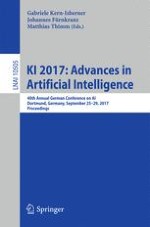This book constitutes the refereed proceedings of the 40th Annual German Conference on Artificial Intelligence, KI 2017 held in Dortmund, Germany in September 2017.
The 20 revised full technical papers presented together with 16 short technical communications were carefully reviewed and selected from 73 submissions.
The conference cover a range of topics from, e. g., agents, robotics, cognitive sciences, machine learning, planning, knowledge representation, reasoning, and ontologies, with numerous applications in areas like social media, psychology, transportation systems and reflecting the richness and diversity of their field.
